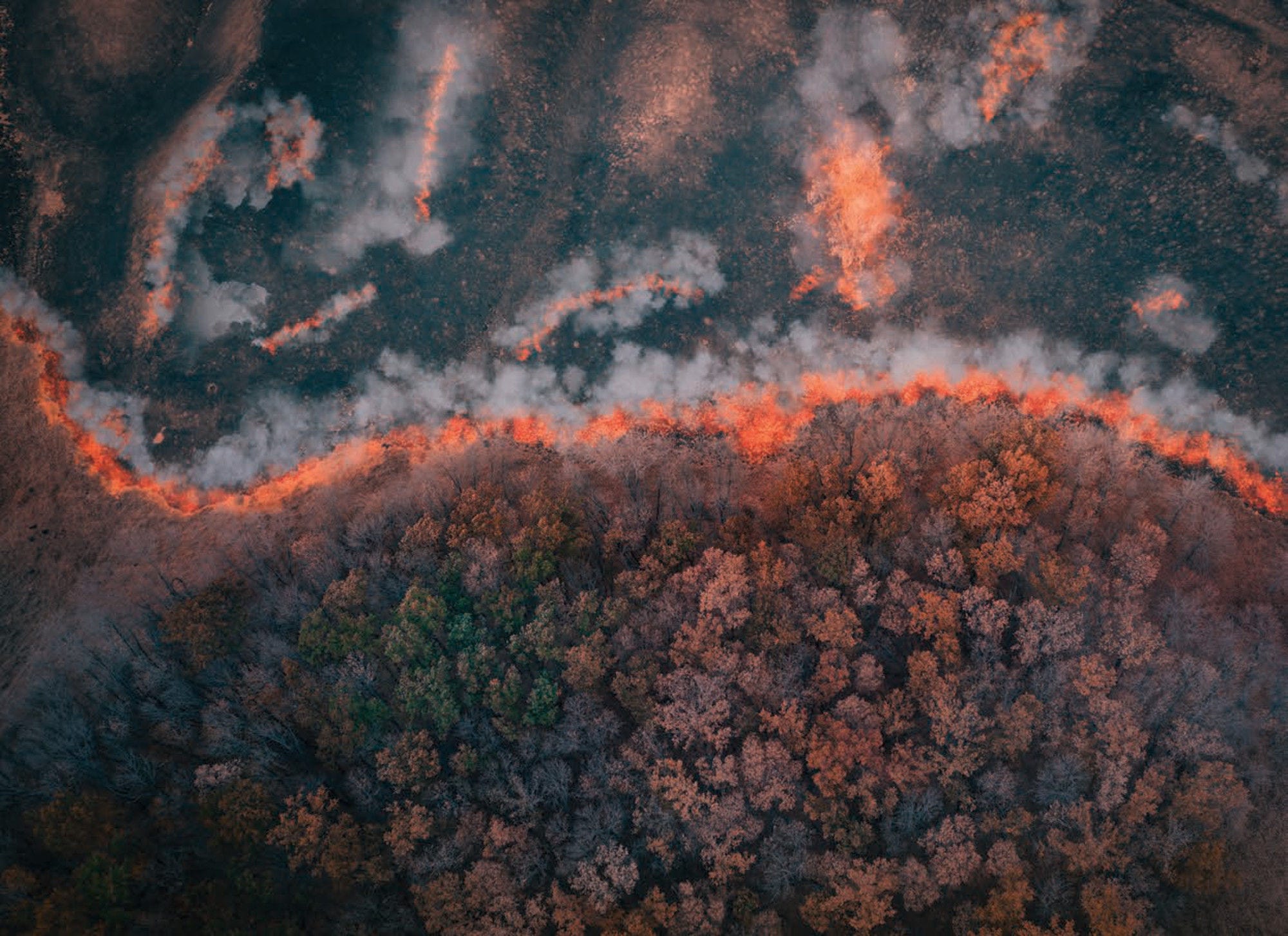This report provides a global assessment and outlook on wildfire risk in the context of climate change. It discusses the drivers behind the growing incidence of extreme wildfires and the attribution effect of climate change. It outlines the environmental, social and economic impacts of wildfires by illustrating the losses and costs observed during recent extreme wildfire events. Building on this, the report presents the findings of a cross-country comparative analysis of how countries’ policies and practices have evolved in recent years in light of observed and projected changes in wildfire risk. The analysis draws on in-depth case studies conducted in Australia, Costa Rica, Greece, Portugal and the United States. The report underlines the urgent need for governments to scale up climate change adaptation efforts to limit future wildfire costs.
Taming Wildfires in the Context of Climate Change

Abstract
Executive Summary
The frequency and severity of wildfires, as well as the duration of the fire season, are increasing in many regions of the world. The occurrence of extreme wildfires – i.e. wildfire events that are particularly severe in terms of their size, duration, intensity and impacts – is also on the rise. In Australia, the average wildfire frequency has doubled since 1980. In the forests of the western United States, wildfire severity, i.e. the degree of ecosystem impacts caused by a fire, increased eightfold between 1985 and 2017. The duration of the fire weather season has increased by 27% globally since 1979.
Climate change is exacerbating extreme wildfire risk. Higher atmospheric temperatures, variable precipitation patterns, the dryness of the landscape, and changing wind and lightning patterns have increased the risk of wildfires. Climate change is estimated to have doubled the total forest area burned in the western United States between 1984 and 2015. The extreme fire weather that facilitated the 2019-20 wildfires in Australia was estimated to be at least 30% more likely because of climate change. Moreover, emissions from extreme wildfires fuel climate change, which in turn further increases the frequency, size and severity of wildfire events, creating a feedback loop between climate change and extreme wildfires.
Unsustainable land-use practices and environmental degradation have also affected natural ecosystems’ resilience to wildfires. Deforestation and the drainage of peatlands worsen drought conditions and increase landscape flammability, thereby contributing to the occurrence of extreme wildfires in countries such as Brazil and Indonesia. Certain agricultural and forestry practices also increase wildfire risk, as evidenced in 2017 in Portugal, where non-native eucalyptus provided highly flammable fuel. In most cases, human activity is also the main cause of wildfire ignition, responsible for nearly 70% of the total burned area globally.
Extreme wildfires cause significant social, environmental and economic disruptions. Their social costs go far beyond lives lost and include widespread health impacts. For example, at the global level, wildfire-induced air pollution is associated with 340 000 premature deaths annually. Extreme wildfires can also cause long-lasting and potentially irreversible ecosystem damage. Following the 2017 wildfires in Chile, nearly 40% of critically endangered habitats were significantly damaged, while the area where vegetation did not grow back after wildfires nearly doubled between 2000 and 2011 in some areas of the United States. The economic impacts of extreme wildfires are also mounting to unprecedented levels. The 2018 California Camp Fire caused around USD 19 billion in direct costs, while the 2019-20 wildfires in Australia caused USD 23 billion in direct costs.
How are countries strengthening their resilience to wildfire risk and what lessons can be drawn?
In response to the growing occurrence of extreme wildfires, affected countries have scaled up their emergency preparedness and response capacity. In the past 10-20 years, affected countries have increased resources to suppress wildfires up to fourfold. However, increasingly extreme wildfires have shown the limits of suppression in containing damage. Some extreme wildfires can take months to suppress, straining firefighting resources and limiting their effectiveness to contain wildfire impacts. The outbreak of several simultaneous fires increases the risk of fatalities. This underlines the importance for countries to strengthen their wildfire risk reduction measures ex ante.
Improve forest and vegetation management
Healthy ecosystems are more resilient and less prone to wildfire ignition and spread. Protecting and restoring degraded forests and peatlands has become a key element in many countries’ wildfire risk prevention efforts. Costa Rica, Indonesia, South Africa and the United States are working to protect and restore forests and peatlands with a view to reducing wildfire risk. Further efforts are needed to curb illegal and unsustainable land use, including by scaling up monitoring and enforcement efforts.
Managing vegetation accumulation in the wildland-urban interface is also critical, as it reduces the amount of fuel available to burn. Fuel accumulation can be managed using prescribed fires and creating buffer zones and fuel breaks. Prescribed fires are commonly used in some countries such as Australia, Canada and the United States. Fuel breaks and buffer zones are increasingly mandated by government authorities but face barriers in terms of local implementation and enforcement capacities.
Adapt the built environment
Land-use planning and building codes and standards are key to protecting lives and economic assets and activities and play a key role in containing extreme wildfire risk and impacts. The significant social and economic impacts that resulted from recent extreme wildfires revealed gaps in the monitoring and enforcement of these measures, highlighting the need to strengthen compliance.
The vulnerability of infrastructure assets and networks to wildfires is a key determinant for the resilience of the whole society to wildfires. As a result, countries have started to develop regulations to require infrastructure owners and operators to abide by fire safety rules and develop contingency plans. However, wildfire regulations often lag behind and measures taken by infrastructure stakeholders remain voluntary.
Increase wildfire management capacity
Better wildfire risk assessments are critical to inform the changing needs for wildfire risk prevention. Up‑to-date information on wildfire hazard, exposure and vulnerability and the integration of climate change impact models can help to better assess future wildfire risk while also effectively inform wildfire risk prevention and preparedness decisions.
A whole-of-government effort is critical to enhance wildfire risk prevention. Forest and land managers, critical infrastructure operators, spatial planning agencies, meteorological services, agriculture ministries, civil protection agencies, local governments, and private property owners all have a critical contribution to make in preventing wildfires. Co-ordination, collaboration and knowledge exchange across sectors and levels of government need to be strengthened. Initiatives to create central co-ordinating bodies, such as the Agency for the Integrated Management of Rural Fires in Portugal, can be effective governance arrangements.
Wildfire risk prevention also requires adequate funding. While strong recognition of the need to invest in wildfire risk prevention can be observed across countries, the increase in funding to date has mostly benefitted emergency preparedness and response capacities. Sufficient and stable public funding for wildfire prevention must be ensured, along with carefully considered crowding in of private wildfire prevention investments.
Related publications
-
 22 January 2024
22 January 2024






